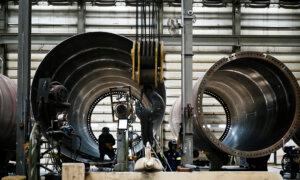Trump Claims Combating Inflation Demands Lower Energy Expenses and a Supply Chain Revamp
President-elect Donald Trump is committed to reducing inflation by addressing energy expenses and resolving any remaining supply chain issues.
In an interview with Time magazine published on December 12, President-elect Donald Trump stated that his pledge to lower costs for American households relies on tackling both high energy prices and fixing “broken” supply chains.
Trump acknowledged that it would be “very hard” to decrease prices from their current elevated levels but expressed optimism that a comprehensive approach could succeed under his administration. Alongside his “drill, baby, drill” strategy of maximizing domestic energy production through deregulation and expedited permitting, he underscored the necessity of addressing persistent supply chain bottlenecks to combat inflation.
“I believe that energy will help lower prices. A more efficient supply chain will contribute to this as well,” Trump stated. “The supply chain remains broken.”
Supply chain disruptions have been widely acknowledged as significant contributors to inflation in the two years following the COVID-19 pandemic, though their ongoing impact on current inflation is less definitive.
EJ Antoni, an economist at the Heritage Foundation, told The Epoch Times that the recent normalization of supply chains suggests that demand-side elements are now the primary contributors to the current inflation scenario.
“Inflation didn’t occur simply because supply chains were disrupted; it was driven by the government spending, borrowing, and printing trillions of dollars it didn’t possess,” Antoni remarked.
Trump did not specify particular solutions for ongoing supply chain challenges, but he reiterated the necessity of addressing them within a broader strategy. His overall plan to combat inflation entails reducing dependence on overseas supply chains by promoting domestic production. For example, he has proposed a reduction of the corporate tax rate from 21 percent to 15 percent for firms manufacturing within the United States.
Alongside focusing on energy and supply chains, Trump has promised to extend tax cuts, simplify regulations, and renegotiate trade agreements to enhance American industry. “We’ll see how it unfolds,” Trump mentioned during the Time interview, asserting that “this country is overwhelmed with rules, regulations, and, quite frankly, people who are unnecessary.”
He emphasized plans to streamline the federal workforce by transitioning employees from government roles to the private sector. “We will need many people in a variety of jobs. Our goal is to place individuals in private sector positions where they can perform better and be more productive,” he suggested, implying that this approach could enhance economic efficiency and alleviate private sector wage pressures.
Kevin Stocklin contributed to this report.



